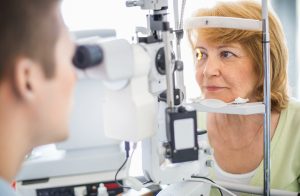At some point after the age of 40, most people will notice changes in their vision. This is a common time when you may start to notice that your eyes are beginning to lose the ability to focus on objects up close, particularly in dim lighting conditions.
The condition to blame for these symptoms is a normal and age-related condition called presbyopia. While everyone gets presbyopia, this isn’t the signal of the end of youth or good vision. There are a variety of effective vision correction options that are specially designed to treat this condition.
Whether you had great vision before or have always worn glasses or contacts, you will be able to overcome the challenges presented by presbyopia. The type of option you can choose will rely on your personal preferences, lifestyle, and your ocular health. Options such as full-time glasses, readers, contact lenses, or a combination of glasses and contact lenses are common.
Presbyopia is a condition caused by age-related changes occurring
Progressive or Bifocal Glasses
This is a great option for presbyopia as long as you are okay with wearing glasses all the time. Bifocals have two prescriptions, one for distance up top and one for near at the bottom of the lens. A line separates these two prescriptions in older lens designs. Progressive lenses contain several lens powers in different areas of the lens, with no noticeable line.
Reading Glasses
Since presbyopia only affects your ability to see up close, reading glasses are a great option to help you see better. These are the best option for someone whose vision is otherwise perfect. You will need to peek over your reading glasses to see at a distance, and if you already wear glasses, you will have to switch between your reading glasses and distance prescription, which is where progressive or bifocal glasses come in handy.
Monovision Contact Lenses
Monovision contact lenses, like single-vision glasses, only have one power. With monovision contact lenses, your eye doctor will give you a distance prescription in one lens and a near vision prescription in the other lens.
Multifocal/Progressive Contact Lenses
A progressive contact lens, like progressive glasses, has multiple powers or prescriptions on a single lens. These will require an adjustment period to get used to your new vision but offers great results. You do not have to tilt your head with multifocal contacts as you would with progressive glasses to find the right spot to see at a distance.
Multifocal lenses are available in various materials, including hard gas permeable, soft, or combining the two in a hybrid lens. With a hybrid lens, you get the clear vision of a gas permeable lens with the comfort of a soft contact lens.
If you are over 40 and have started to struggle with your near vision, schedule an appointment for a comprehensive eye exam with Dittman Eyecare today!